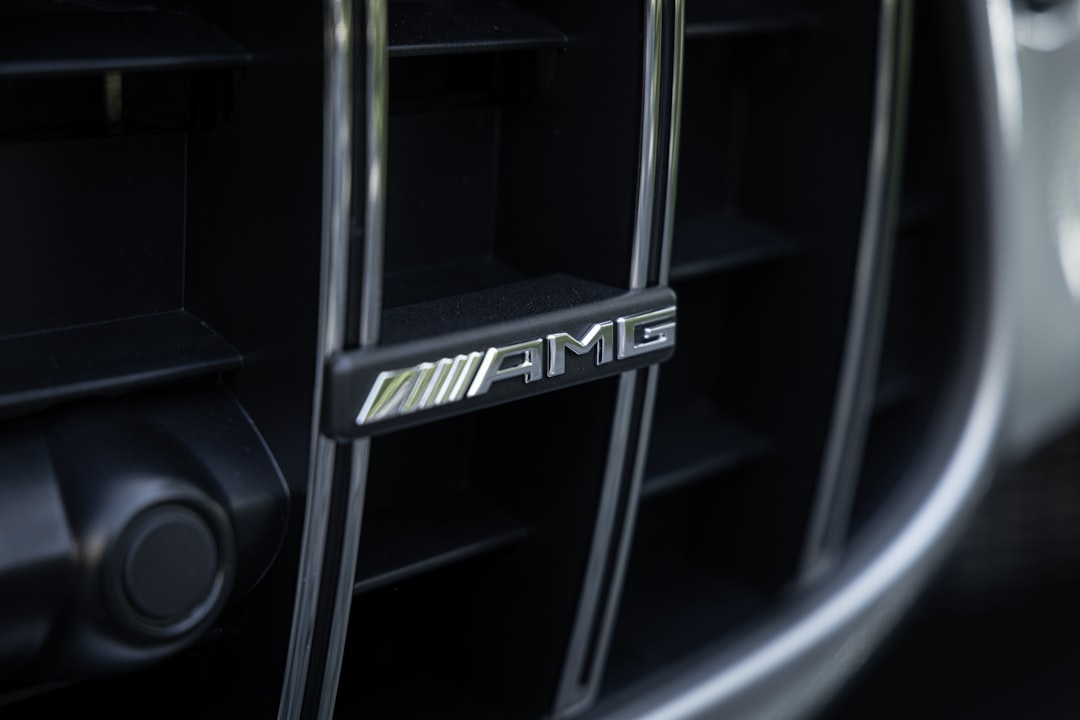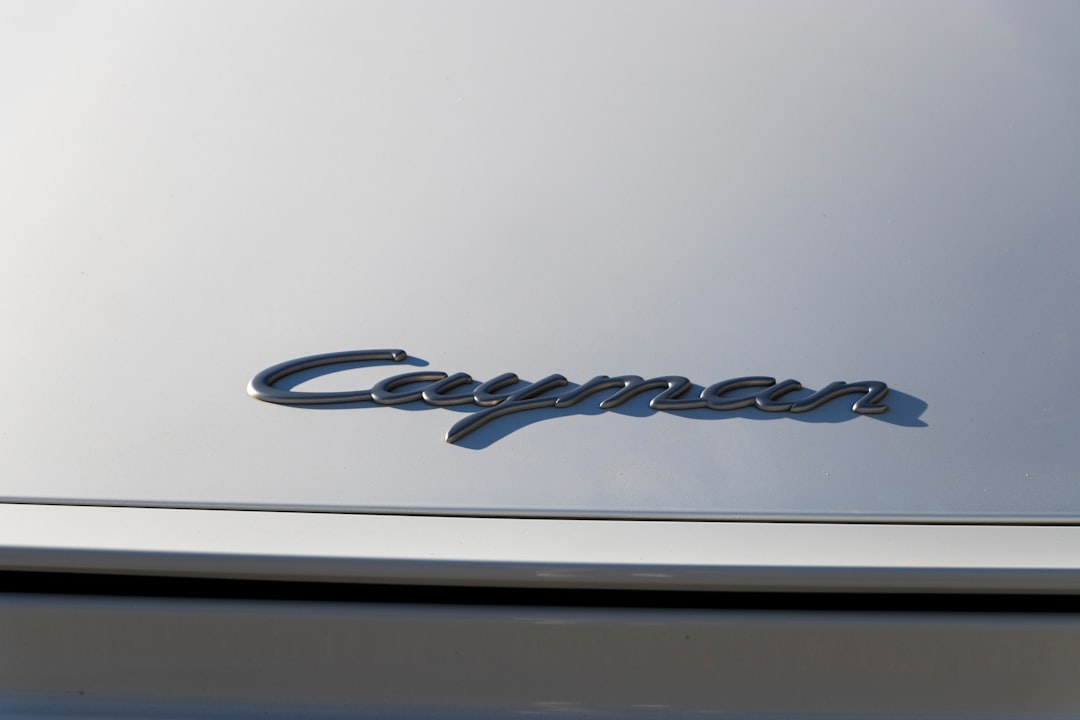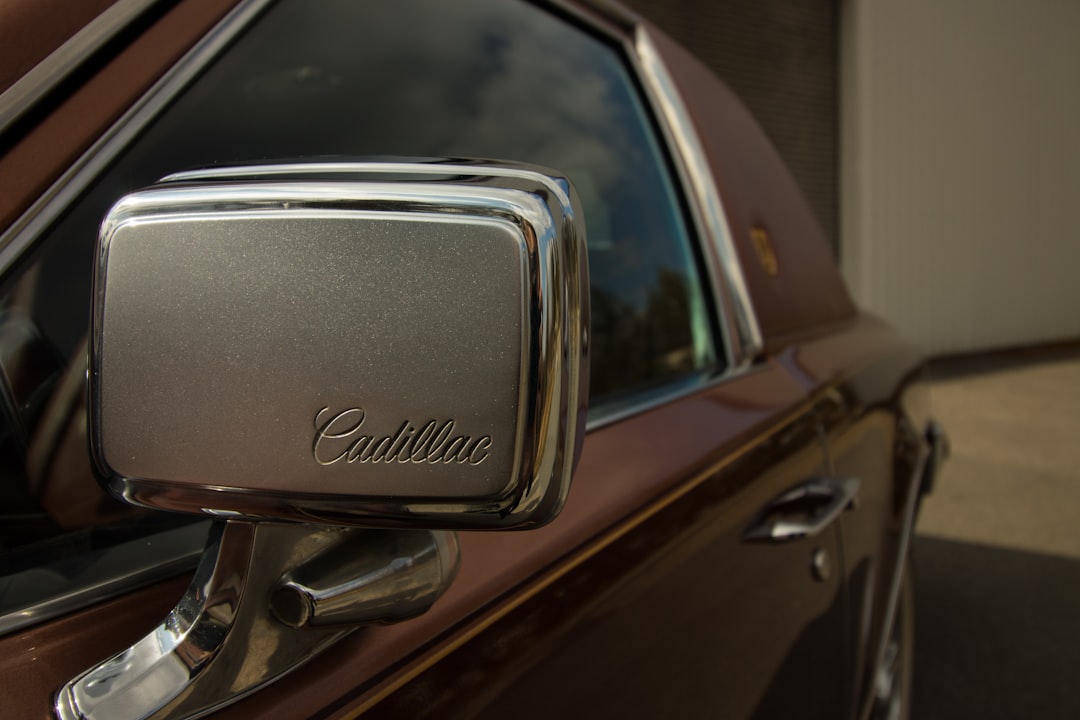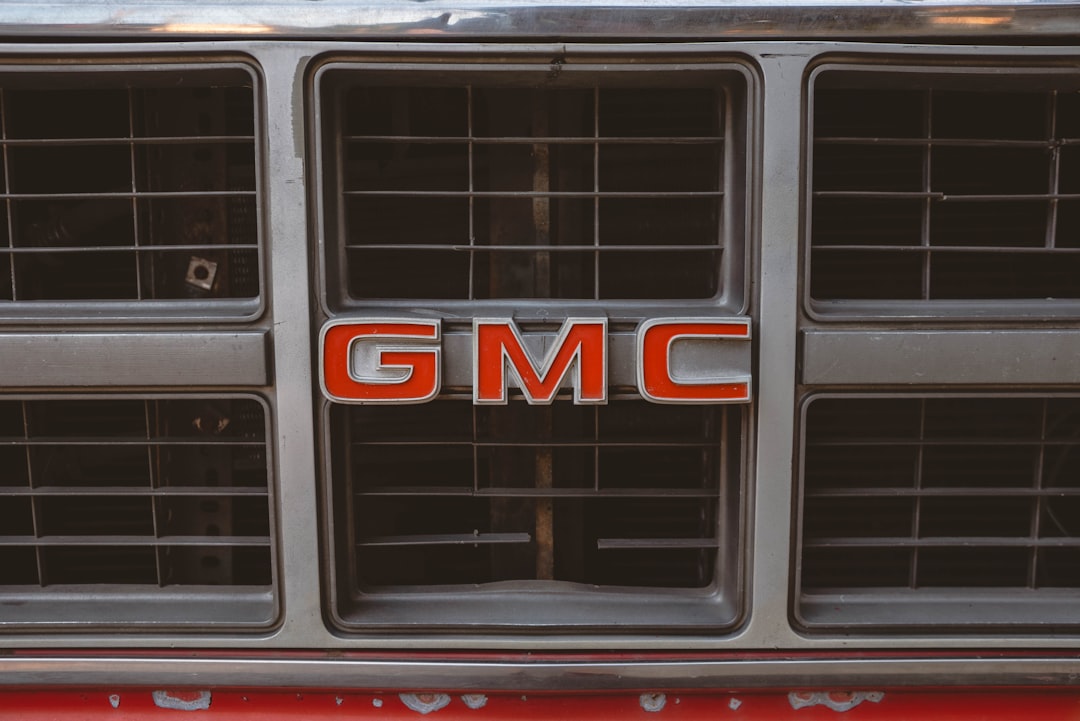

Engage prospects with a scan and streamline customer engagement with FREE QR code marketing tools by Sona – no strings attached!
Create a Free QR CodeFree consultation

No commitment

Engage prospects with a scan and streamline customer engagement with FREE QR code marketing tools by Sona – no strings attached!
Create a Free QR CodeFree consultation

No commitment
Car grille manufacturers operate in a sector defined by rapid innovation and fierce competition, where every detail, from materials and design to sustainability, can influence consumer choice and brand positioning. For many teams, the challenge lies in bridging the gap between physical products and digital engagement. Traditional workflows, from analog inquiry cards to siloed CRM systems and printed catalogs, contribute to missed opportunities, slow feedback loops, and a frustrating lack of visibility into who is actually interacting with products or marketing assets. Missing high-value prospects, especially those who never fill out a form, directly impacts growth and market share.
As the market pivots toward custom grilles, electric vehicle integration, and restored vintage models, distinguishing each product and building meaningful connections with buyers has become more complex and more crucial than ever. This complexity is compounded when offline touchpoints generate interest, but there is no clear line of sight into which customers are engaging or how to follow up in a meaningful way.
QR codes emerge as a transformative tool, closing the loop between in-person engagement and digital acquisition. By delivering instant access to in-depth product data, installation guides, custom configurations, and real-time support directly from a physical asset, QR codes address key industry frustrations. Leveraging QR technology empowers car grille manufacturers to improve traceability, streamline part identification, enrich their CRM with previously anonymous leads, and drive connected customer experiences without the friction of app downloads or manual data entry.

Maintaining strong customer engagement is particularly challenging in automotive manufacturing, where the path from initial interest to purchase can be fragmented by analog processes. Many high-intent buyers interact with physical assets, like packaging or showroom displays, without leaving traceable digital footprints, causing valuable leads to go unnoticed. For sector-specific ideas, explore Sona QR’s automotive industry strategies.
The first step is to convert passive materials into interactive gateways. Replace printed catalogs, warranty cards, and static brochures with mobile-optimized, QR-linked experiences. This allows customers to deepen their research immediately and gives your team a measurable stream of engagement signals that feed your CRM. Beyond convenience, this shift introduces discipline and accountability into your funnel, making it possible to attribute outcomes to specific touchpoints and refine what you deploy in the field. For printed assets, see how QR enhances brochures.
When backed by automation tools, QR codes turn every grille or promotional asset into a smart entry point. You can collect actionable buyer signals, provide self-serve support, and streamline sales follow-ups while gradually replacing inefficient, analog workflows that lead to lost leads and abandoned interest. Solutions like Sona QR’s product overview support code creation, dynamic destination updates, and analytics, so your team can move quickly without adding operational burden.

The automotive parts industry faces frequent disconnects between physical and digital engagement. Buyers research grilles, compare options in-store, or flip through catalogs without submitting an inquiry, which leaves manufacturers in the dark about who is interested or why prospects abandon the journey before converting. This lack of visibility into anonymous traffic is a core challenge; potential leads often remain unknown and unpursued. Automotive teams are already applying QR codes for cars to close this gap.
By embedding QR codes on physical grilles, display materials, and packaging, manufacturers can instantly connect interested parties to digital experiences such as configurators, AR visualizations, or fast-response forms. A QR code on a vintage grille’s product card can link to restoration guides, a parts compatibility checker, or an expert consultation request. This removes friction at the moment of curiosity and enables follow-up, even when buyers pause before purchase.
Dynamic QR codes introduce a layer of flexibility that is crucial for adapting to market or content changes. If technical specs, compliance statements, or promotional offers change after printing, dynamic codes allow real-time updates without costly reprints. That agility keeps every touchpoint accurate and relevant, which maintains buyer confidence and protects your brand. You can generate both static and dynamic codes at Sona QR.
Trackability is another major advantage. Manufacturers gain insight into which assets, promotions, or events capture genuine interest, then use those signals to adjust their strategy. This reduces wasted spend and helps build audience segments for more effective retargeting. By centralizing engagement data in a tool like Sona QR, companies can prioritize follow-ups where purchase intent is highest and continually optimize customer journeys with evidence, not guesswork.
Car grille manufacturers must address a spectrum of engagement scenarios, each with its own challenges. Static QR codes are well-suited for fixed content, like serial number lookups or product spec PDFs, but they cannot adapt when campaigns change. Dynamic QR codes power real-time updates and analytics, which is essential for keeping content current as product lines evolve.
Dynamic QR codes are ideal for campaigns, content that evolves, and any asset where you want tracking and retargeting. Static codes are best for evergreen references that will not change, like serial verification or safety notices.

Unlocking growth hinges on addressing the industry’s persistent struggle with fragmented data and manual engagement capture. Prospective buyers routinely interact with packaging, under-hood labels, and printed collateral, yet often leave no trace for sales follow-up. That leads to churn risk, missed upsell and cross-sell potential, and difficulty forecasting demand for specific grille lines. For dealerships and partner channels, QR-led vehicle acquisition is already producing qualified leads.
QR-enabled touchpoints create measurable moments in places where interest already happens. Focus first on placements aligned to high-intent behaviors, then expand to awareness drivers. Each placement should carry a clear value proposition for the scanner and a defined next action for your team.
These opportunities also open the door to richer audience building. Segment high-fit prospects by product line and use case, for example custom designs, EV-compatible grilles, or vintage restorations, and adapt your remarketing tactics accordingly.

Industry-specific pain points often originate from difficulty verifying product origin, lack of accessible installation support, and limited post-sale engagement. These gaps suppress conversion, increase support costs, and limit repeat business. QR codes solve for each of these while creating a traceable feedback loop.
By strategically deploying QR codes at these points, manufacturers can enhance customer experience, track high-value engagement moments, and lay the groundwork for new revenue streams across aftermarket sales, services, and accessories.
The inability to identify and engage high-fit, anonymous traffic has long led to missed retargeting opportunities in this industry. Each QR scan is a powerful intent signal that reveals product interest, channel, location, and timing. With the right setup, you can auto-segment scanners and sync those audiences to your CRM and ad platforms for personalized follow-up. For execution, see Sona’s Playbook titled Intent-Driven Retargeting: Driving High-Impact Campaigns with First-Party Intent Signals.
Start by mapping scans to the buyer journey stages. Assign distinct QR codes to awareness, consideration, and conversion touchpoints so the data you collect reflects context. Then use tags for product interest, environment, and time of day to refine segments. For example, you might create separate audiences for EV grille shoppers who scanned a showroom poster versus vintage enthusiasts who engaged at a classic car rally.
With a centralized platform like Sona QR, each code becomes a smart entry point that captures data automatically. You can retarget based on real behavior rather than assumptions and ensure your team focuses on warm opportunities with the highest likelihood of conversion.
Fragmented marketing efforts are a common bottleneck for automotive manufacturers. QR codes provide the connective tissue that unifies data across channels and converts offline interactions into measurable digital activity, a core principle of mobile-online marketing. Every brochure, mailer, product label, event banner, and even serialized part can be part of a cohesive funnel.
A strong integration strategy starts with alignment on goals and consistent creative across media. Your QR codes should use standardized design elements and clear CTAs so buyers immediately recognize the value of scanning. Then, ensure each code resolves to a mobile-first destination that matches the promise made on the physical asset.
QR codes serve as the offline onramp to your digital marketing engine. They also unlock a new layer of data collection across channels that were once difficult to measure. With a centralized platform such as Sona QR, you can manage all your codes, monitor performance, and sync scan data with your CRM and ad platforms to build a single source of truth.
Successful QR deployments start with clarity. Define the business problem you want to solve, align stakeholders, and design the experience around the action you want customers to take. The steps below provide a practical roadmap from ideation to optimization.
Clarify objectives that target specific business challenges, such as authenticating products, simplifying installation, reducing counterfeit risk, or activating post-purchase engagement. When your use case is precise, you can choose placements and destinations that deliver measurable improvement.
Tie each use case to a single primary action. For example, a showroom code should open a configurator or booking request, while a packaging insert should lead to registration or an installation playlist. This focus streamlines creative, minimizes drop-off, and ensures you can attribute outcomes accurately.
Choose static codes for evergreen needs like serial number verification or fixed spec PDFs. Static codes are simple, inexpensive, and reliable for information that will not change. Select dynamic codes when you need tracking, retargeting, or flexibility to swap destinations without reprinting.
Dynamic codes are recommended for most customer-facing campaigns. They allow you to A/B test destinations, localize content by region, and capture data such as location and device. Platforms like Sona QR give you a single dashboard to manage both static and dynamic codes at scale.
Incorporate brand elements like your logo and colors, and add a clear CTA that sets expectations. Test visibility in real-world contexts, including small labels, reflective surfaces, and variable lighting. Ergonomics matter. Codes near curved or textured surfaces may require a slightly larger size or a contrasting frame to preserve scannability.
Before deployment, conduct multi-device testing. Validate that iOS and Android devices scan quickly, links resolve fast over cellular networks, and pages load in under three seconds. Invite installers, sales reps, and a small group of customers to trial the experience and provide feedback on clarity and usefulness.
Prioritize high-impact placements based on customer behavior and existing performance gaps. Start with packaging, showroom displays, and trade show assets, then expand to direct mailers, distributor materials, and out-of-home signage as you build confidence.
Ensure each placement matches its environment. For example, use weather-resistant labels for outdoor events, larger codes for distant viewing on banners, and laminated inserts for boxes that may encounter moisture. Create a simple deployment checklist for your team and partners to keep execution consistent across locations.
Monitor scan activity and downstream conversions weekly. Look beyond raw scan counts to actions taken: video completions, configurator usage, quote requests, and registrations. Use the data to iterate creative and adjust placements. If a code underperforms, test a stronger CTA, larger size, or new destination.
Connect your analytics to revenue. With Sona QR and your CRM, map scans to contacts, opportunities, and closed-won deals. Tag campaigns with UTM parameters and use A/B tests on landing pages to improve conversion rates. Share findings with sales and operations so the entire team can act on what the data reveals. For attribution modeling, read Sona’s blog post Single vs Multi-Touch Attribution Models.
Proving campaign ROI is a persistent challenge in automotive manufacturing, especially when multiple channels and physical interactions cloud attribution. Insights often stop at raw scan counts, which leaves a gap between awareness and revenue. Without knowing which scans lead to demo requests, quotes, or purchases, teams cannot confidently prioritize spend.
Modern QR code tracking closes this gap. By instrumenting each destination with analytics and connecting scan events to CRM records, manufacturers can build a full-funnel view that begins at the moment of interest. This enables granular reporting by product line, placement, partner, and event. It also empowers marketers to optimize in real time rather than waiting for monthly summaries. For frameworks and tactics, see Sona’s blog post The Essential Guide to Offline Attribution: Maximizing ROI Through Offline Channels.
Platforms like Sona QR capture real-world engagement with precision. Sona is an AI-powered marketing platform that turns first-party data into revenue through automated attribution, data activation, and workflow orchestration; visit Sona.com to learn how it connects identity and intent across your stack.
A few operational habits can dramatically increase the return on your QR investments. Treat every code like a campaign asset with an owner, a purpose, and a metric. Reinforce that discipline with automation so scans trigger timely responses without manual work.
Focus first on the media your buyers see most: packaging, showroom displays, and event signage. Then leverage retargeting and lifecycle messaging to nurture scanners who did not convert on first touch. The tips below reflect best practices for the car grille market and can be implemented quickly.
You can generate, manage, and track your first codes in minutes with Sona QR. Start creating QR codes for free.

Successful QR deployments share a few traits: a clear value proposition, a quick-loading mobile destination, and an obvious next step. The examples below illustrate how manufacturers and parts brands are already using QR codes to reduce friction and improve measurable outcomes across the funnel.
These examples work because they respect the buyer’s time and context. Each QR code promises something valuable, delivers it on a mobile-optimized page, and makes the next action obvious.
Clarity and execution quality determine scan rates as much as offer strength. Buyers should instantly understand what they get for scanning and how long it will take. Match the physical environment with code size and placement, and test thoroughly before scale deployment to avoid avoidable friction.
Cross-functional coordination matters. Involve marketing, product, and production so messaging, materials, and timelines stay aligned. A small misstep, like a QR code printed too small on a reflective grille, can erase campaign value and frustrate customers at the moment of truth.
A disciplined approach helps manufacturers avoid lost engagement, wasted spend, and customer confusion. These pitfalls are common in auto parts marketing, yet they are preventable with cross-functional planning and a data-driven mindset.
QR codes have quickly evolved from being mere shortcuts to essential strategic assets for car grille manufacturers. When left unaddressed, industry pain points like missed leads, invisible buyer engagement, and opaque attribution can erode market share and stunt growth. QR technology, adopted thoughtfully, transforms every asset into a data-rich entry point, allowing innovation and connection to flourish in tandem.
Manufacturers harnessing these capabilities can move beyond generic engagement to deliver fully connected experiences. They drive measurable results from customer awareness to post-purchase loyalty without missing key revenue clues hiding in offline interactions. By capturing and acting on real intent signals, teams are better positioned to focus resources, refine messaging, and demonstrate tangible business impact.
With comprehensive QR campaign management and analytics platforms now within reach, car grille manufacturers are able to bridge the offline-online divide and link their physical products to true market outcomes. The effect is improved brand perception, higher customer satisfaction, and a continuous cycle of optimization that compounds growth over time. Tools like Sona QR and Sona’s blog post The Essential Guide to Offline Attribution: Maximizing ROI Through Offline Channels can centralize your codes, track engagement, enrich CRM data, and attribute revenue so you can scale what works with confidence.
QR codes have revolutionized the car grille manufacturing industry by transforming traditional product access into dynamic, measurable engagement opportunities. Whether it’s streamlining product information delivery, enhancing customer interactions, or enabling seamless access to installation guides and warranty registration, QR codes replace outdated methods with instant, mobile-friendly connections that capture valuable real-time data.
Imagine knowing exactly which car grille models attract the most interest and being able to instantly update your marketing materials without the cost of reprinting. With Sona QR, you can create dynamic, trackable QR codes in seconds, monitor every scan’s impact, and link each interaction directly to customer acquisition and sales growth. No missed leads, no guesswork—just efficient, data-driven results. Start for free with Sona QR today and turn every scan into a pathway for engagement and revenue.
The article does not specify individual leading car grille manufacturers globally but focuses on industry trends and the use of QR codes within the car grille manufacturing sector.
QR codes enhance automotive manufacturing by bridging physical products and digital engagement, improving traceability, streamlining part identification, enriching CRM data, and enabling connected customer experiences without manual data entry.
Using QR codes in car marketing provides measurable engagement, instant access to product information, dynamic content updates, improved lead capture, better customer segmentation, and allows for automated follow-ups that increase conversion rates.
Manufacturers can integrate QR codes by placing them on product packaging, grilles, display materials, catalogs, trade show assets, and inserts to link buyers directly to installation guides, configurators, warranty registration, and support resources.
The article outlines that QR codes have evolved from simple shortcuts to essential strategic assets for automotive manufacturers, addressing challenges like missed leads, lack of buyer visibility, and poor attribution to drive connected, data-rich customer experiences.
Use Sona QR's trackable codes to improve customer acquisition and engagement today.
Create Your FREE Trackable QR Code in SecondsJoin results-focused teams combining Sona Platform automation with advanced Google Ads strategies to scale lead generation

Connect your existing CRM

Free Account Enrichment

No setup fees
No commitment required

Free consultation

Get a custom Google Ads roadmap for your business






Launch campaigns that generate qualified leads in 30 days or less.
